Are you looking to begin the process of data center migration? This comprehensive guide explores what a data center migration is, how to carry one out, and why using the right tools can ensure that the transition happens as seamlessly as possible.
What is data center migration?
Data center migration, otherwise known as data center relocation, is the term for transferring existing operational assets from one data environment to another. This may refer to an organization moving assets to a new physical location, or to a new IT platform or infrastructure, such as the cloud network.
There are different types of data center migrations, but regardless of which one takes place, the process can be accompanied by logistical, physical, and organizational challenges. A move requires intricate planning and systematic risk prevention to ensure each component is migrated correctly.

Why is data center migration carried out?
Companies may decide to conduct a data center migration for various reasons. Many are out of necessity, such as when the existing data infrastructure no longer fulfills operational needs, a company is relocating, or new regulations have been introduced that require compliance.
However, companies may carry out a migration for other reasons. In cases of business mergers or operational expansions – moving data centers can help reduce costs, increase cyber security, and enhance geodiversity, especially when dealing with a global customer base.
When moving headquarters, organizations may migrate across borders to save money on taxes and increase business efficiency.
When should you migrate?
Efficiently executing a data center migration requires coordination and careful timing. By analyzing their existing data center performance, it is up to each company to decide when it is the right time to transition to a new data center.
It is important for businesses to thoroughly analyze the performance of their existing data center, as they may not be utilizing it to its fullest potential.
How to do a data center migration: step-by-step guide
Assess the scope of operation
Analyze and catalog the existing data center, taking stock of everything that will need to be transferred to the new location. Think about all of your services and applications, not just physical equipment.
Test existing assets
Assess current assets for age, working condition, and transport viability. Also, consider their relevance and importance in the context of their environment.
It’s also important to consider the status of ownership for each of your assets. For example, do you have leased equipment for which you may need to find contact information?
Select future infrastructure
Once you have decided on the type of data center migration you are performing, select the proper infrastructure to move your assets onto. This could mean moving off-premises entirely onto the cloud, staying with a physical presence, or a mixture of both.
Make your final decision carefully based on price, suitability, and potential benefits. Remember, this is a long-term commitment, so think about ways to make your migration as future-proof and sustainable as possible.
If it is a physical location that you are moving to, then you’ll need a ‘forklift’ plan to transport your equipment. It helps at this stage to enlist the support of a white-glove service provider who can assist with your cross-border movement and project management.
On the other hand, if you’re moving to a cloud-based provider, it will be necessary to think about how you will handle the large amounts of data that are going to transfer, especially if you will need significant uptime during the transition process.
Predict impact on current operations
With any data center migration, there will naturally be an amount of operational impact. Be sure to acknowledge what level of damage will occur due to the infrastructure change.
Conduct data center migration
Before conducting your final migration, it is always a good idea to have a checklist ready with all the steps you’ll need to complete the operation. It’s also an excellent idea to stress-test your migration before it begins to ensure that there’s nothing you have missed.
Once this is done, begin the process by carrying out the plan you specified, confirming each component on the checklist is accounted for. Test each element as you go along and communicate with each party responsible for every aspect of the migration.
Types of data center migration
There are numerous different types of data center migration that a company may perform. These include:
Relocation migration
In a migration relocation, a company moves some or all of its infrastructure from one environment (source data center) to another (target data center). A common type of relocation is to a data colocation center.
In cases of physical relocation across borders, companies will need to consider how to export (and import) their goods in their new location.
There are three challenges that you may have to overcome when migrating across borders:
- Suppose you don’t have an entity or a registered contact responsible for complying with local importing regulations. In that case, you will need to either apply as an IOR (Importer of Record) or employ the help of an outside party.
- You need to consider all import compliance requirements if you are your own entity. If you are transporting dual-use goods, avoid getting mission-critical items stuck in customs indefinitely.
- Consider the risk of Permanent Establishment, and take steps to ensure any profits you make in the target country are not subject to revenue tax due to the company becoming a permanent taxable presence.
Consolidation migration
If you’re an enterprise-level business, heading toward a merger, or simply a company looking to bolster growth potential, opting for a consolidation migration will mean scaling back rather than shifting entirely away from a traditional data center.
Choosing this route ensures that assets are spread out between different centers, meaning that costs can be saved on hardware, manpower, and power, among other things.
Cloud migration
Cloud migration is one of the more popular types of data center migration in recent years. This involves transferring IT infrastructure to the cloud environment, including all services and applications.
However, despite not having an on-premise presence, it is worth considering that cloud migrations are not always more cost-effective than maintaining a physical location if not managed correctly.
Hybrid migration
As the name suggests, hybrid data center migrations are a mixture of the above migration types. In this case, companies may have parts of their IT infrastructure in the cloud, some in self-owned data centers and some in colocation centers.
While getting this method right means businesses can benefit from increased market resilience, flexibility, and insurance against risk, a hybrid migration must be carefully monitored and planned before execution.
Best practices
Bearing in mind some best practices before and during your data center migration can help you to navigate some of the associated challenges more easily. Here are some of them:
Assess the viability of migration
Put together a business strategy outlining the reasons for making a data center migration. Encompass all of the pros and cons and communicate with other stakeholders, making sure they buy into your decision-making.
Keep expectations in check
Data center migration is a significant undertaking, so it is essential to consider your current limitations when deciding potential deadlines and milestones. Use stress testing to measure how long your migration should take, and don’t set unrealistic goals. Doing so could mean that critical steps are missed, and crucial mistakes are made.
Communicate with frequency
For many stakeholders, data center migrations will often disrupt standard working patterns, particularly in periods of downtime. To make this disruption pass as seamlessly as possible, keep in touch with relevant team members at all stages of your operation, from pre-planning to completion and feedback.
Migrate in stages
As tempting as it may be to migrate your data all at once, moving smaller data sets in stages is preferable. Continually tracking the outcomes of each stage will allow you to diagnose specific issues before they become too widespread.
Validate throughout
At each milestone of the migration, validate your data with tests to ensure that it is being migrated as expected.
Review with an eye on improvements
After the data center migration is completed, revisit the changes you have made and assess whether they have made the impact you had hoped. Look in particular for the quality and reliability of the data you are collecting.
Tools to use
The type of tool used in a data center migration largely depends on the size of the company that is executing it. Migration tools are important for streamlining the process and bringing together the various moving parts.
Generally, one of three types of tools will be required for a migration:
- Open source tools – usually free or low-cost to run.
- On-premise tools – primarily for medium or large-sized businesses.
- Cloud-based tools – designed to help transfer IT infrastructure to the cloud.
Whichever tool is used, it must have the capability to let you view your projects through a unified view to help you track all of the moving assets.
How much does a data center migration cost?
A smaller, less comprehensive migration may cost around $100,000, whereas a larger one may come in at well over a million dollars. How much your data center migration will cost depends on the context, environment, and circumstances your company or client is in.
Data center migration checklist
Once you’ve done the bulk of the planning, it’s always helpful to have a data center migration checklist nearer to migration day, which you can use to plan and tick off critical phases of your move:
Before migration
- Decide your migration strategy and receive buy-in from all relevant stakeholders.Choose which migration service you will use.
- Ensure training is given out and received on new software or programs.
- Make sure installation instructions are accurate and in place.
- Have contingency plans in place in case hardware failures occur.
- Stress test your migration before it occurs.
During migration
- Keep stock of every piece of moving equipment and track its progress, likewise with personnel.
- Make sure that all physical assets have reached their destination.
- Continually monitor audit trails and logs.
- Embrace obstacles and allow for adaptations at short notice.
After migration
- Thoroughly test and review all of the new systems’ capabilities.
- Conduct a post-migration audit to ensure all assets are accounted for.
- Sustainably dispose of non-functional equipment.
Final thoughts
As daunting a task as a data center migration may seem at first, there are numerous steps you can take to alleviate some of the risks involved. With careful planning, broad communication, and attention to detail, the process can prove not only to increase operational capacity but also to be a platform to reduce costs, increase efficiency, and bolster market presence.
TecEx data center services
Need assistance importing your assets across borders as part of a data center migration?
Look no further than TecEx, who not only acts as your IOR (Importer of Record) but also guarantees first-time customs clearance, meaning you can move hardware stress-free.
Moreover, our simplified project management ensures you have a single point of contact ready to resolve all of your clients’ import compliance needs, removing the need for any third parties.
With a designated team operational in over 200 countries, TecEx is your ideal partner for all of your importing and exporting needs.



